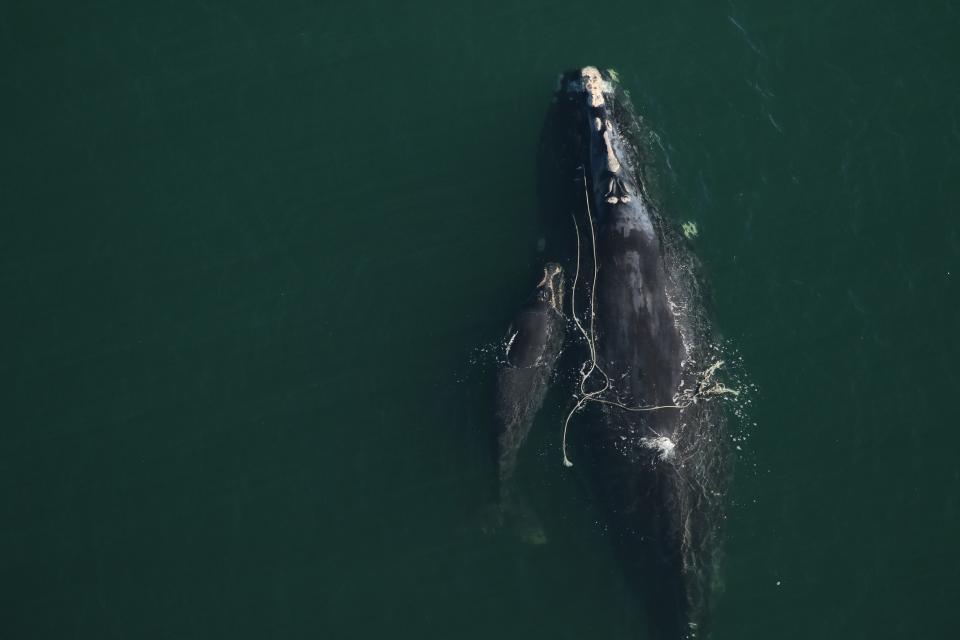This is how renewables — even offshore wind — can help save whales | Opinion
As climate change continues to have a significant impact on aquatic life, policymakers are turning to the promise of renewable energy — including offshore wind — to help slow the pace of global warming, a benefit of which could mean saving aquatic species, including whales.
Already we’re beginning to see major consequences linked to rising ocean temperatures and sea levels as a result of climate change. These environmental disruptions are causing significant harm to whale populations by reducing their breeding habitat, disrupting migratory patterns, and diminishing krill populations on which they feed. Every year that goes by without significant emissions reductions brings us closer to a potential marine life mass extinction event.
Offshore wind could be important in reversing this trend, ensuring that whale populations will both survive and thrive for generations to come. Each offshore wind farm will offset millions of metric tons of carbon emissions through powering hundreds of thousands of homes with clean renewable energy, while reducing our reliance on carbon intensive forms of energy such as oil and gas. Located miles away from shoreline, offshore wind farms are highly reliable, capable of generating round the clock energy as the turbines are exposed to an almost constant stream of wind – even when wind speeds appear low on land.
Recently, some have argued that offshore wind development may harm whales, but the science is very clear that activities surrounding offshore wind energy are not responsible for a whale strandings and beachings. Federal officials overseeing offshore wind activities have quashed any link between the two since the first whale washed ashore in December. One deputy chief for NOAA stated unambiguously that there is no information that “wind development could directly lead to the death of a whale."
As an expert in this field, I can confidently say that there is a near zero possibility that slow-going surveying vessels used for offshore wind development are in responsible for these anomalous deaths. Offshore wind surveying vessels typically travel at 8-10 knots, slow enough to safely navigate among the sea life and too slow to harm a whale.
So, while we can rule out this possibility, that still doesn’t explain what’s causing the concerning rise in whale deaths. Vessels in general are not free from blame, as cargo shipping vessels and entanglement in netting from fishing vessels have long been known to be the leading causes of whale injury and death.
At least 115 humpback whales have been killed by cargo vessel collisions in the past fifteen years, but the actual number is likely much higher, as many whale carcasses sink and never end up washing ashore. There has been a notable increase in vessel traffic along the East Coast, particularly around New York City, which just became the busiest shipping port in the US. With elevated traffic flowing through the region, it is likely that this would heighten collisions — and unfortunate whale deaths. And in North Carolina, a right whale — a critically endangered species with fewer than 350 remaining — was spotted off the coast of North Carolina last week, entangled in a fishing net. Luckily, rescuers reached and freed this whale in time.

We need scientists to research these whale beachings further so we can best protect endangered marine life. But in the interim it’s important that policymakers, the media and the public stick to the facts. And to date, the facts show that renewable energy projects like offshore wind will be instrumental in preventing whale deaths by reducing harmful carbon emissions that contribute to climate change — which will soon be the real mass killer of whales.
Walt Nadolny has been a Professor of Marine Transportation at SUNY Maritime College for 17 years. He has been a delegate to the International Maritime Organization’s Marine Environmental Protection Committee and a former member of the steering committee of the Environmental Consortium of Hudson River Valley Colleges and Universities.
This article originally appeared on NorthJersey.com: East Coast whale deaths can be mitigated by renewable energy

